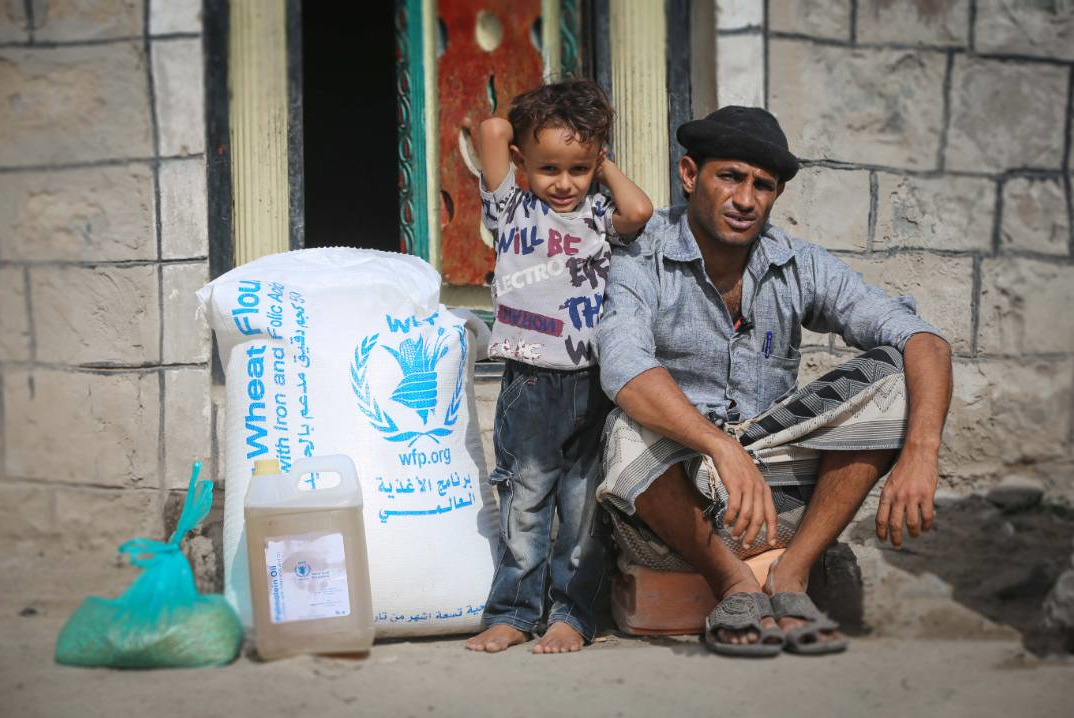
Hunger in Yemen: A “Slow Motion Collapse”
Between late July and early August, seven cargo ships filled with 176,000 metric tons of Pacific Northwest wheat set off from the Willamette River in Portland, Oregon, to begin a more than 40 days journey west. However, the wheat had not been purchased by one of the United States’ big global trading partners. It was purchased by the United States government itself for the World Food Program (WFP) in order to provide urgent food assistance to millions of people in Yemen.
Before the outbreak of conflict in 2015, Yemen—a country the size of Texas—was already the poorest country in the Middle East without many of its own natural resources. It imported nearly all its goods, including foods like wheat, corn, rice and meat. As infrastructure has broken down, jobs have disappeared, and certain ports and major routes have become inaccessible due to ongoing conflict, millions of Yemenis have become prisoners in their own country, largely cut off from vital goods and services.
WFP has scaled up its efforts on emergency food assistance significantly over the past three years. The current level of hunger in Yemen is unprecedented, with almost 18 million people—or two-thirds of the population—lacking enough food. Of these, more than eight million are severely food insecure and rely on external assistance for survival. The latest shipment of American wheat will be distributed by WFP across 19 of 22 governorates, helping to support millions of people between October and January.
The continued increase of hungry people is indicative of a “slow motion collapse,” says Stephen Anderson, WFP’s Country Director in Yemen. “The people are running out of any means to keep things going. They are selling off their last assets at home…economic activity is down. There’s no investment in Yemen now. No private sector. And with institutions starting to collapse, people have very, very little to go on.”
As Mr. Anderson travels around the country, he meets many people with different stories who now all rely on WFP for food. One family left their fishing village and traveled to the port of Hodeidah in search of work after conflict erupted and fishing boats without formal permission were banned from coastal waters, being considered potential vehicles for smuggling weapons. As this family fled, one of their sons went missing and has not yet been found. The family now receives WFP assistance while the father looks for work and the mother take care of the other children. Mr. Anderson has also received personal letters from university professors in Yemen who have stayed in the country to teach, but they no longer receive their salaries and are unable to purchase enough food themselves to survive.
These professors, along with many humanitarian agencies, recognize that education will be one of the keys to helping Yemen out of crisis. An estimated 2 million children are currently out of school in Yemen, and even those who are able to attend often enter buildings which have been damaged by the conflict and may lack basic resources like desks and running water.
However, going to school provides a sense of normalcy that is desperately lacking in other areas of Yemeni children’s lives. In March of this year, WFP was able to resume its school meals program for about 110,000 children, with the goal of reaching about 600,000 during the 2018-2019 school year. Locally-sourced date bars and high energy biscuits from Jordan are currently being provided.
In mid-September, WFP’s Executive Director David Beasley released a statement urging an end to fighting in order to prevent the country from slipping into a devastating famine. WFP is scaling up assistance to help 8 million Yemenis a month but anticipates that the number of severely food-insecure people will grow to 12 million if the conflict continues to intensify. Despite the best efforts of all humanitarian actors in the country, only peace will be able to provide Yemenis with the stability and sustained access to resources that will allow them to rebuild their infrastructure and their lives.
This post was written by Ann Nallo, World Food Program USA









